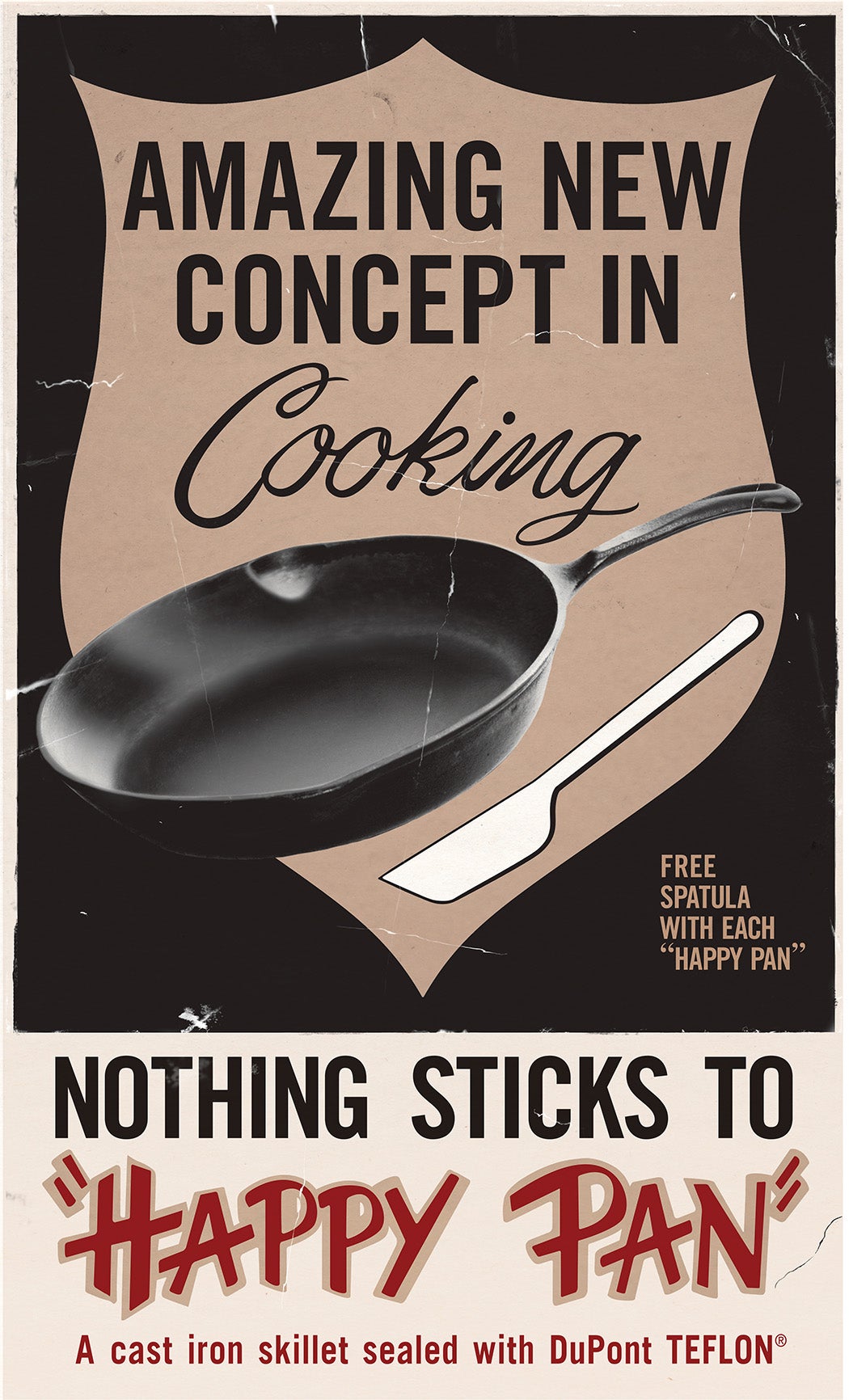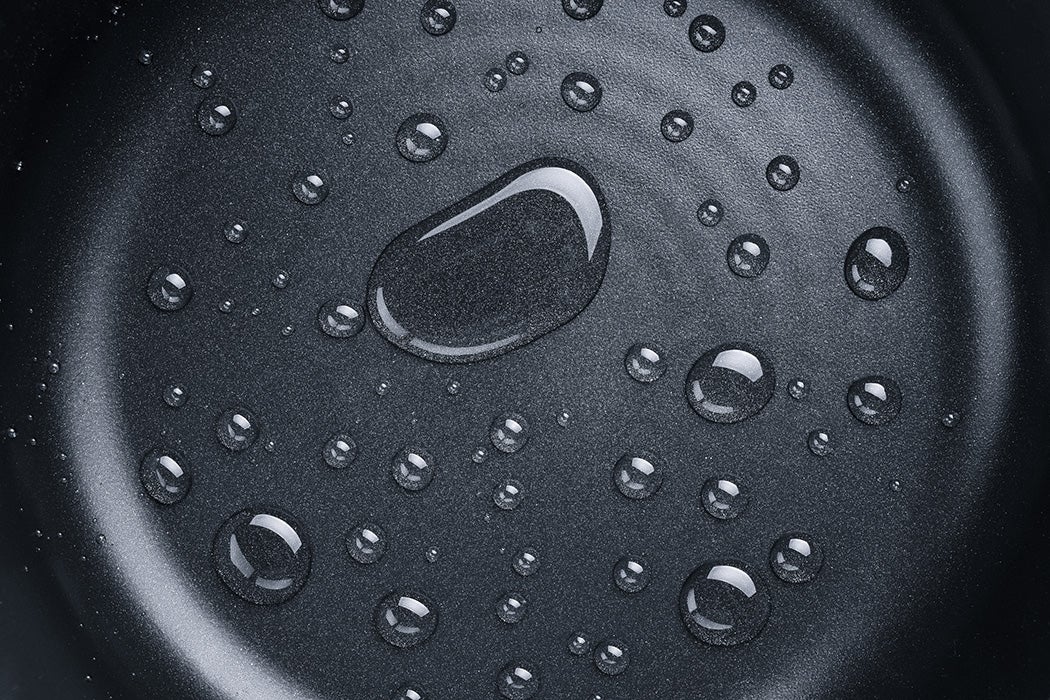Nonstick pans were a game changer. A twentieth-century invention for the busy home cook. Lightweight and easy to care for. No more scrubbing residue off metal pans. Omelets and pancakes that slide onto the plate. It was almost as if we were entering a space age for kitchenware.
What would be branded—and celebrated—as “Teflon” was actually discovered by accident by DuPont chemist Roy J. Plunkett in 1938. Plunkett’s account of his discovery was quoted by C. N. R. Rao in an article for Current Science as an example of a serendipity. As he recalled,
On this particular day, soon after the experiment started, my helper called to my attention that the flow of tetrafluoroethylene had stopped. I checked the weight of the cylinder and found that it still contained a sizeable quantity of material which I took to be tetrafluoroethylene. I opened the valve completely and ran a wire through the valve opening, but no gas escaped. When I shook the cylinder and found there was some solid material inside, I removed the valve and was able to pour the white powder from the cylinder. Finally, with the aid of a hacksaw, the cylinder was opened and a considerably greater quantity of the white powder was obtained. It was obvious to me immediately that the tetrafluoroethylene had polymerized and the white powder was a polymer of tetrafluoroethylene.
Trying to capitalize on this new polymer, polytetrafluoroethylene, DuPont initially focused on industrial applications. The Science News Letter reported on one of them in its “New Machines and Gadgets” section in October 1949, announcing that
INSULATING SPACERS, for use in high frequency electrical applications requiring top performance, are made of the plastic polytetrafluoroethylene and are fashioned in the various forms required. Their loss factor, dielectric constant and dielectric strength do not vary with temperature change below 400 degrees Fahrenheit.
It hadn’t been what Plunkett was looking for, but DuPont quickly found ways to profit from it.

By the 1950s, DuPont was advertising their product in the pages of Scientific American, advising scientists of its many uses. In an ad framed as a “technical report,” the company announced that “this plastic engineering material is remarkable for its chemical inertness, excellent dielectric properties, and the wide temperature range over which the properties of ‘Teflon’ are unaffected.”
It would be a French scientist who saw the possibilities for a domestic use in cookware and who licensed the use of Teflon to create the Tefal brand. DuPont quickly followed with their own line of cookware for the US market using the polymer, calling it the “Happy Pan.”
Today, Teflon is everywhere. The brand name itself has become a generic term for those who resist any kind of damage (including politicians to whom no dirt sticks). It turned out to have value in unexpected areas, too: ecologists have used bands made of Teflon to tag wild birds.
Weekly Newsletter
But Teflon and the chemicals from its production are also in many places we don’t want them. The manufacture of Teflon has caused those living near the factory to be exposed to toxins. It’s also been found to become toxic at heats above 500F.
From a groundbreaking development to a source of forever chemicals, Teflon might not be so “nonstick” after all.







